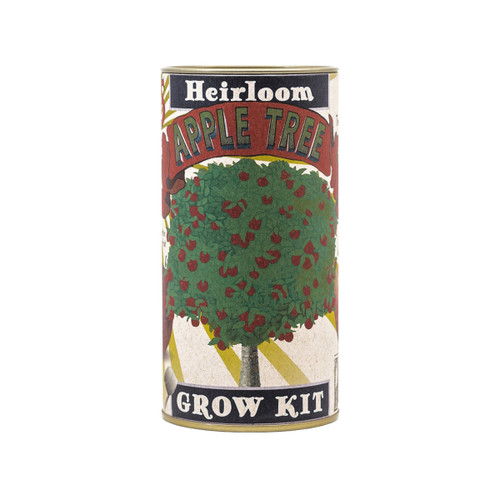Fruit trees and native shrubs are a welcome addition to any yard for a variety of reasons. Your fruit trees will produce fruit you can enjoy every year and last up to 20 years. It’s your very own source of organic food, saving you from having to buy expensive organic foods at the grocery store. They’re also an excellent source of shade and add value to your home when you eventually sell it.
Native plants are easier to grow and they attract a variety of native species. You’ll be helping to maintain the ecosystem in your region and you’ll enjoy the pastime of having these welcome visitors. Additionally, you help to control pests because the birds you attract will feed on insects. Native plants will thrive in your environment and provide food, shelter, and nesting materials. Habitat loss is a threat in any region so by planting fruit trees and native plants, you create a friendly environment, contributing to conservation efforts.
To start from scratch, there are seed grow kits of all kinds available including apple trees, grape vines, cherry trees, fig trees, and more. To enjoy a fruit bearing tree much faster, buy a young tree that’s already developed so you can begin to enjoy organic fruit right from your yard.
Fruit tree growing basics
Most of the fruit trees come in different sizes including dwarf, semi-dwarf, and standard and are available bare root or potted. You can choose the size as well as a variety that grows in your area that will be resistant to pets because they’re locally adapted. Always plant your fruit tree at the right time, which is going to largely depend on your area. Once you’ve planted your fruit tree, water and tend to it regularly until it’s well established. After a few years, water can be reduced but consistently prune and fertilize it yearly.
Dwarf: A small tree for smaller spaces that require an 8’ diameter plot. Beneficial in that they’re easy to prune and harvest as they don’t grow tall. The yield is less with a smaller tree but the fruit size is standard. They’ll start to bear fruit in three to five years but don’t live as long as a larger tree.
Semi-dwarf: Semi-dwarf trees require an area of 15’ diameter and can grow as high as 16’. They are good producers but will take a year off and produce little or no fruit, usually after a season of heavy production. This is the most common option because they produce a lot without being too large without requiring a huge space.
Standard: These are large trees that can grow up to 30’ if not pruned. They can take many years to reach full size and begin to bear fruit in three to five years. They are higher maintenance and require more space but you can prune them to hold them back from growing too large.
Choosing fruits trees for your garden
When shopping for a fruit tree, look for strong, straight stems as they do best when they grow straight. If a young tree has a slight lean, you’ll need to stake it otherwise it becomes a large lean. The branch will become laden with fruit during production time. A fruit leaning in one direction is out of balance and vulnerable to wind.
Look for a central branch that is the obvious leader, growing straight up. A tree with no defined leader will require more pruning to keep it in balance.
A ‘candelabra’ shape with branches extending evenly in all directions will provide balance as it matures. Even growth will keep the tree balanced and growing straight and is best for maximizing the most fruit production. When fruit is distributed evenly, it prevents branches from breaking from fruit overload.
Choosing native and related shrubs
Add other plants to enhance your garden that will support local wildlife, offering berries and blooms. Choose from the plants that you already know grow in your area. For example, if there are wild raspberries in your area, you can grow raspberries in your backyard. Do some research to see what native plants are suited for your area.
First consider the amount of sun exposure you have to offer as some plants require full sun while others are hardy and can thrive in full sun or part shade. You can choose native plants based on the wildlife. For example, Native Jersey Tea attracts songbirds and hummingbirds while native roses are excellent for pollinators and a variety of birds.
Conclusion
Fruit trees offer your household and wildlife organic fruit. With native plants and shrubs, you provide food, water, shelter, and habitat. You’ll benefit from being able to view birds, bees, and butterflies in your yard. There are a variety of options depending on the size of your yard and based on the wildlife you want to help. Create a wildlife oasis right in your backyard with fruit trees and native plants.






